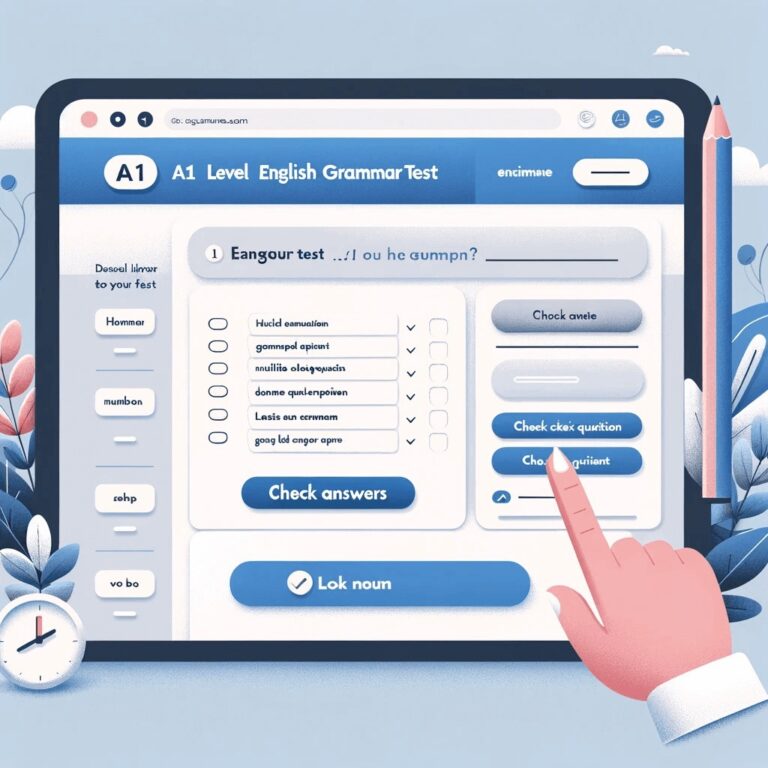Prepositions are words that show the relationship between a noun or pronoun and other words in a sentence. They usually indicate the position or direction of something in relation to another object or person.
Common prepositions in English include “in,” “on,” “at,” “by,” “with,” “to,” “for,” “from,” “of,” “about,” and “until,” among others.
Here are some examples of how prepositions are used in sentences:
- “I am going to the store.” In this sentence, “to” is the preposition that shows the direction of the speaker’s action.
- “The book is on the table.” Here, “on” is the preposition that shows the position of the book in relation to the table.
- “She works with her colleagues.” “With” is the preposition that shows the relationship between the subject (she) and her colleagues.
- “I am from New York.” In this sentence, “from” is the preposition that shows the speaker’s place of origin.
It is important to note that prepositions can sometimes be used as adverbs or conjunctions in certain contexts. Understanding the correct usage of prepositions is essential for clear and effective communication in English.

Table of Contents
ToggleExamples of Prepositions in English
Here are some examples of common prepositions in English:
- in: She is in the kitchen.
- on: The book is on the table.
- at: They will meet at the restaurant.
- by: I sent the letter by mail.
- with: He is talking with his friends.
- to: She went to the store.
- for: This gift is for you.
- from: I am from France.
- of: The color of the sky is blue.
- about: We had a conversation about the weather.
- between: The cat is between the two chairs.
- under: The dog is sleeping under the table.
- over: The plane flew over the mountain.
- across: She walked across the street.
- through: He drove through the tunnel.
- among: The flowers are among the trees.
These are just a few examples of the many prepositions in English. Remember that prepositions show the relationship between a noun or pronoun and other words in a sentence, indicating position, direction, or other types of relationships.

Exercises on Prepositions of English
- Fill in the blank with the correct preposition:
- She is sitting _______ the couch.
- The book is _______ the shelf.
- I will meet you _______ the park.
- They went _______ the beach for vacation.
- The cat is hiding _______ the bed.
- Rewrite the sentence using a different preposition:
- The ball is on the table. –> The ball is ____________ the table.
- The store is across the street. –> The store is ____________ the street.
- She is in the car. –> She is ____________ the car.
- They are walking to the store. –> They are walking ____________ the store.
- He put the book on the desk. –> He put the book ____________ the desk.
- Choose the correct preposition to complete the sentence:
- I will meet you _____ 8 o’clock. (at, on, in)
- The picture is _____ the wall. (in, on, at)
- The book is _____ the library. (in, on, at)
- She is interested _____ learning a new language. (at, in, for)
- The party is _____ my house. (at, on, in)
- Complete the sentence with the appropriate preposition:
- The dog ran ________ the street.
- She is waiting ________ the bus stop.
- The keys are ________ the table.
- The plane flew ________ the clouds.
- He walked ________ the door and entered the room.
I hope these exercises help you practice using prepositions in English. Remember to review prepositions regularly and practice using them in your everyday communication to improve your English skills. You may also refer my articles on English Grammar here:

Answers to The Exercises of Prepositions
- Fill in the blank with the correct preposition:
- She is sitting on the couch.
- The book is on the shelf.
- I will meet you at the park.
- They went to the beach for vacation.
- The cat is hiding under the bed.
- Rewrite the sentence using a different preposition:
- The ball is under the table.
- The store is on the street.
- She is beside the car.
- They are walking toward the store.
- He put the book upon the desk.
- Choose the correct preposition to complete the sentence:
- I will meet you at 8 o’clock.
- The picture is on the wall.
- The book is in the library.
- She is interested in learning a new language.
- The party is at my house.
- Complete the sentence with the appropriate preposition:
- The dog ran across the street.
- She is waiting at the bus stop.
- The keys are on the table.
- The plane flew through the clouds.
- He walked through the door and entered the room.
What are all 50 prepositions?
Here are 50 common prepositions in English:
- about
- above
- across
- after
- against
- along
- among
- around
- at
- before
- behind
- below
- beneath
- beside
- between
- beyond
- but
- by
- concerning
- considering
- despite
- down
- during
- except
- for
- from
- in
- inside
- into
- like
- near
- of
- off
- on
- onto
- out
- outside
- over
- past
- regarding
- round
- since
- through
- throughout
- to
- toward
- under
- underneath
- until
- with
It’s important to note that this is not an exhaustive list of prepositions in English, as there are many others that are used less frequently. Nonetheless, knowing and using these common prepositions can help you to better communicate and express yourself in English.
What are preposition rules?
Here are some general rules for using prepositions in English:
- Prepositions show the relationship between a noun or pronoun and other elements in a sentence, such as time, location, direction, manner, or purpose.
- A preposition is usually followed by a noun or pronoun, which is known as its object. For example, in the sentence “I went to the store,” “to” is the preposition and “store” is its object.
- Prepositions are often used in prepositional phrases, which include the preposition and its object, as well as any modifiers that may be present. For example, in the prepositional phrase “on the table,” “on” is the preposition and “table” is its object.
- Prepositions can be used with a wide range of verbs, adjectives, and nouns to create different meanings and relationships. For example, the preposition “with” can be used with verbs like “work,” adjectives like “happy,” and nouns like “friend” to create phrases like “work with,” “happy with,” and “friend with.”
- Some prepositions have multiple meanings, depending on the context in which they are used. For example, the preposition “over” can be used to indicate physical location (“the book is over the table”), but it can also indicate time (“he will be here over the weekend”).
- Prepositions can sometimes be combined with other words to create phrasal verbs, which have idiomatic meanings that may not be predictable based on the meanings of their individual parts. For example, the phrasal verb “look up” means “to search for information” and is not necessarily related to the meanings of the individual words “look” and “up.”
These are some general rules for using prepositions in English. However, there are many exceptions and variations in the usage of prepositions, so it’s important to study and practice using them in context to become more fluent and accurate in your English communication.
Here are the types of prepositions.
There are several types of prepositions in English, including:
- Simple Prepositions: These are the most common type of prepositions and include words like “at,” “in,” “on,” “to,” “from,” and “with.”
- Compound Prepositions: These are made up of more than one word, such as “according to,” “in front of,” and “out of.”
- Double Prepositions: These are two separate prepositions used together to indicate a specific relationship or meaning, such as “up to,” “in between,” and “out from.”
- Prepositional Phrases: These are groups of words that include a preposition and its object, along with any modifiers, such as “on the table,” “with a friend,” or “in the park.”
- Participle Prepositions: These are formed from verbs in the present participle or past participle form, such as “including,” “excluding,” “concerning,” and “regarding.”
- Prepositions of Time: These indicate when an action occurs, such as “at,” “on,” “in,” and “since.”
- Prepositions of Place: These indicate where an action occurs, such as “at,” “in,” “on,” “under,” and “over.”
- Prepositions of Movement: These indicate how something moves or travels, such as “to,” “from,” “towards,” and “away from.”
Understanding the different types of prepositions can help you to use them more accurately and effectively in your English communication.
This article is created via Chat GPT OpenAI Thank you, OpenAI. prepositions in English



